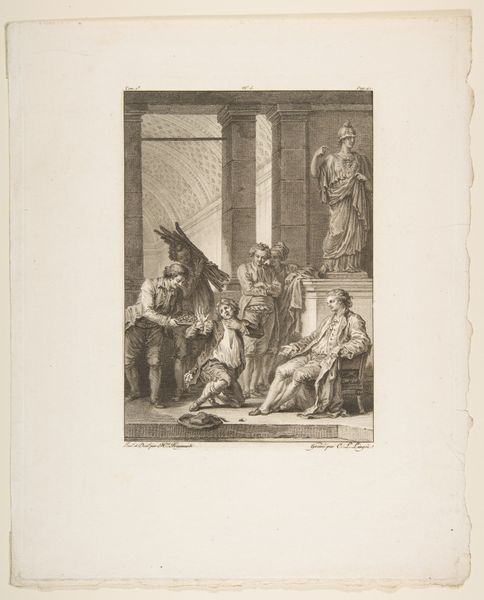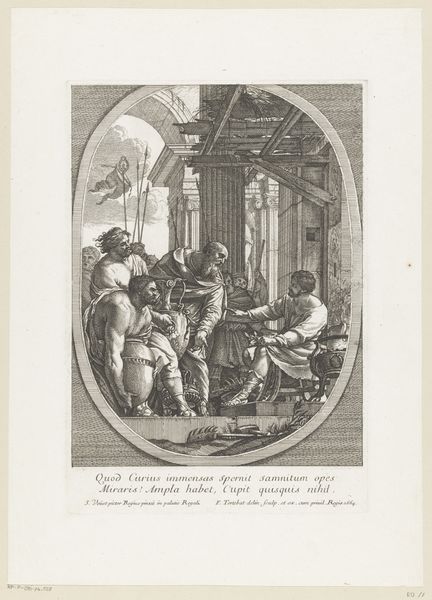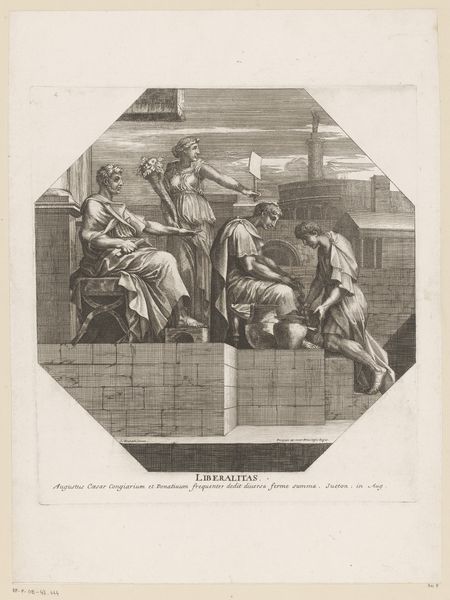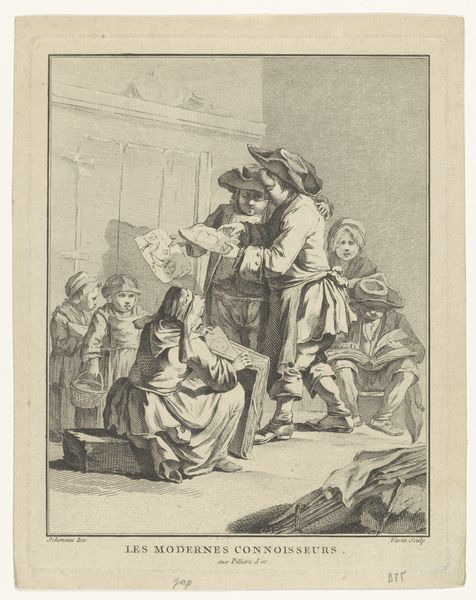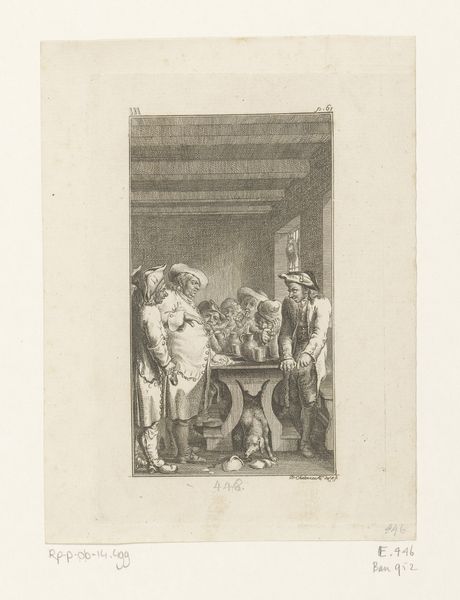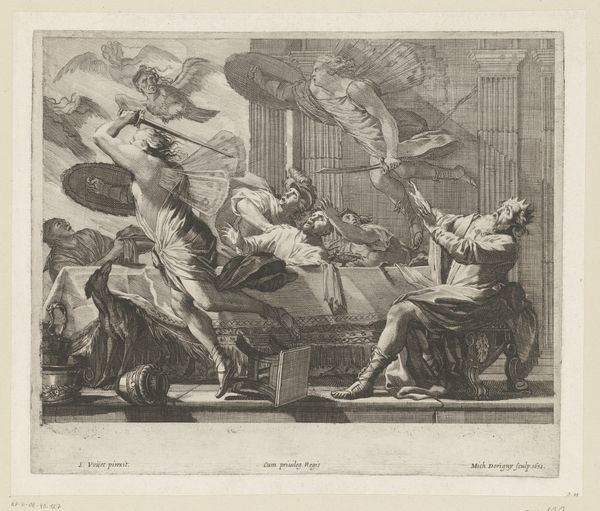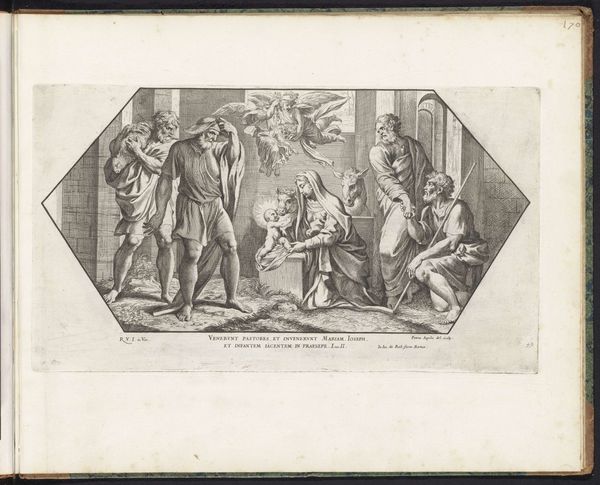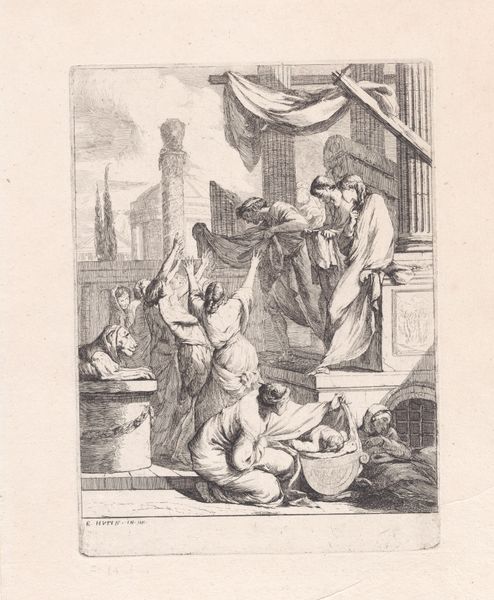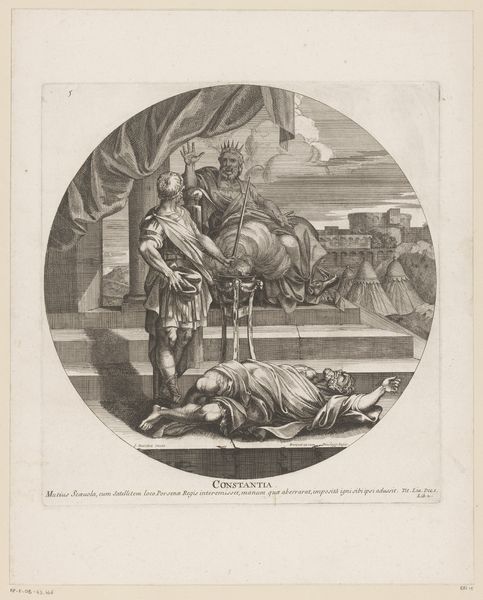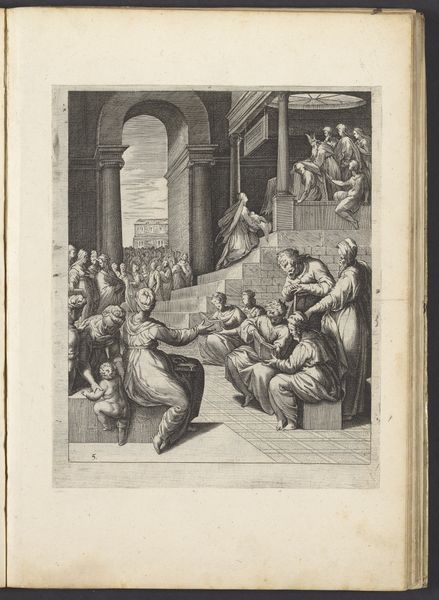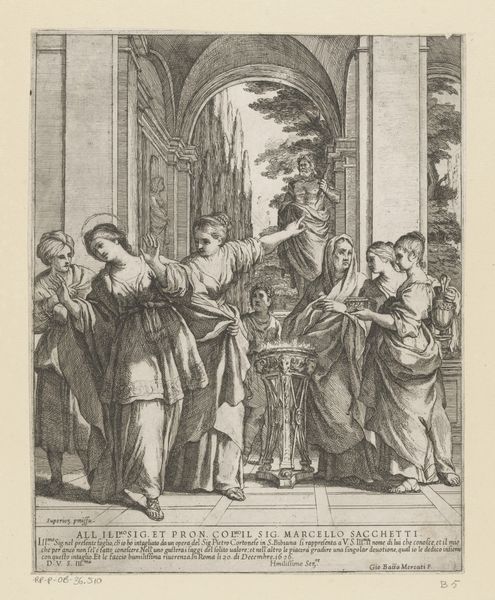
print, engraving
#
pencil drawn
#
baroque
# print
#
charcoal drawing
#
figuration
#
pencil drawing
#
geometric
#
ancient-mediterranean
#
line
#
history-painting
#
academic-art
#
engraving
Dimensions: height 318 mm, width 305 mm
Copyright: Rijks Museum: Open Domain
Curator: "Aritmetica," an engraving from around 1663-1716, attributed to Jacques-Antoine Friquet de Vauroze. It has such a balanced composition, despite all the figures present. What strikes you first about it? Editor: Well, seeing the Roman numerals and the classical setting, it seems to portray knowledge and authority. How would this piece have been received by the public at the time? Curator: That's insightful. Think about the rise of academies and the scientific revolution. "Aritmetica," depicting Papirius, a Roman censor, in a rather staged intellectual setting, presents a very particular vision of power. Who had access to learning, and therefore, power, in this era? Editor: Presumably, only a select few... those of wealth or noble birth. Was this print intended for them specifically? Curator: Likely so. Consider its function as a marker of status. Possessing knowledge, documented here in print, became a signifier of belonging to an elite, educated class. The architectural backdrop further emphasizes their social and cultural world, don't you think? How does that influence the reading of the subject matter? Editor: The columns give it an official feeling, as if the work of documenting knowledge is essential to maintain society and power dynamics, or even that it represents them. Curator: Exactly. This engraving highlights how institutions not only shaped artistic production, but were equally embedded with the era's specific ideas about knowledge and those who could access it. It's not just about arithmetic, it's about who gets to define it and for what purpose. It reveals something profound about the social currency of intellect during that period. What are your thoughts? Editor: I hadn't considered the implications about social structures inherent in its setting. I guess art isn't just art, but a political reflection as well.
Comments
No comments
Be the first to comment and join the conversation on the ultimate creative platform.
